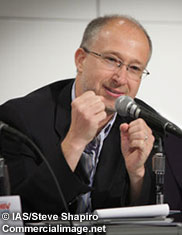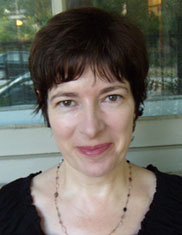by Jeffrey Laurence, M.D.
A recurring
fact in many of these updates is that people with HIV who are successfully
treated with antiretroviral therapy (ART) still have infected cells in which HIV
remains silent, invulnerable to attack by the immune system or standard
anti-HIV drugs. This is a critical barrier to curing HIV. As we have learned
from several studies of “strategic treatment interruptions,” virus growth
returned quickly in most individuals, usually within weeks of stopping the
drugs. However, new studies by amfAR-funded grantees Drs. Steven Deeks and Una
O’Doherty have provided fresh hope that immune-based approaches can play a role
in suppressing HIV in the absence of ART, and in achieving a cure.

Dr. Steven Deeks |

Dr. Una O'Doherty |
Writing in the January 2013 issue of the Journal of
Infectious Diseases, Dr. Deeks, of the University of California, San
Francisco, Dr. O’Doherty, of the University of Pennsylvania, and colleagues
from eight other prestigious institutions describe a clinical trial using a
special form of interferon, known as pegylated interferon (PEG-IFN) alfa-2a. Twenty-three
HIV-infected individuals, whose virus growth was well controlled on ART, were each
given one of two doses of this PEG-IFN along with their usual drug regimens.
After five weeks, their anti-HIV drugs were stopped and the PEG-IFN continued
for up to 12 weeks, with an option to continue for 24 weeks, depending on their
viral loads.
A typical viral load for an HIV-positive patient who has gone off ART might range as high as
several hundred thousand copies. During
this study, at week 12, 45 percent of evaluable subjects—nine out of 20
individuals—had maintained viral loads of less than 400 copies. This was significantly
less than what was expected based on prior treatment interruptions. Four of the
subjects had “undetectable” viral loads—less than 48 copies—and stayed off all
therapy except the PEG-IFN for a full six months.
This study took place in the context of scientists pursuing a functional cure for HIV,
whereby patients might control the virus once they have stopped ART. The
patients in this study started ART before the virus had taken a severe toll on
their immune systems. The drugs had brought the virus under control such that
ongoing damage to the immune system may have been minimized. Under these
conditions, the authors conclude that they have established “a proof of
concept” that HIV growth can be markedly suppressed in people in whom the
“detrimental effects of uncontrolled HIV replication on immune function have
been partially reversed by ART.”
Dr. Laurence is amfAR’s senior
scientific consultant.